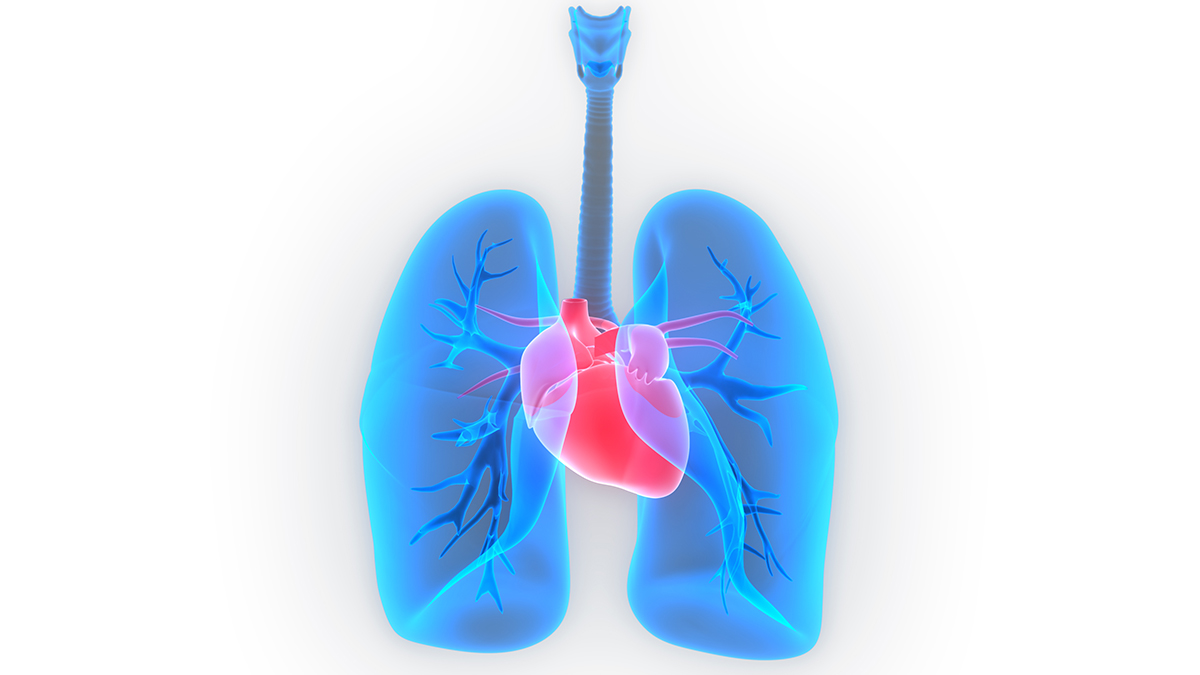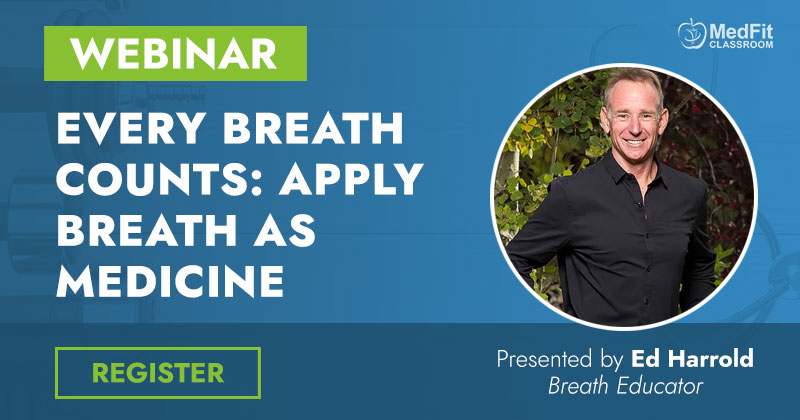Breathing patterns determine the physiologic response in the cardiovascular and autonomic nervous system (ANS). Specifically, the physiologic and biochemical response is driven by the length, depth & pace of our breathing and whether we’re mouth breathing or nasal breathing.
We are all born nasal breathers. Every animal on earth breathes through its’ nose unless it’s hunting or being hunted. For optimal human performance, nasal breathing is the most optimal form of respiration not only for fitness and high-end athletic performance; but also, for our overall health and well-being.

Let’s begin by understanding the importance of the length, depth and pace of our breathing pattern.
- The length of our inhale and exhale dictates the response between our heart and brain. The longer and slower the inhale, the less sympathetic (or cooler) its’ response. The longer and slower the exhale, the greater improvement of Heart Rate Variability (HRV) health and the burning of fats as our primary energy source. The fields of neuroscience and specifically, Neurocardiology have revealed some amazing research.
- The depth determines the level of the diaphragmatic movement downward on inhales and upward on exhale. Most of us are mouthing shallow breathers never really engaging the diaphragm in much of the breathing process.
- The pace of the inhale and exhale set in motion brain wave activity, HRV and our primary source of energy whether it be fat or sugar. We want to be taking the least amount of breaths per minute for optional health and performance.
Now let’s explore the differences between our inhale and exhale. Our inhale raises the heart rate and is based in the sympathetic branch of ANS. This branch’s primary energy source is cortisol and adrenaline (or heat).
Our exhale lowers our heart rate and is based in the parasympathetic branch of ANS. It’s meant to dominantly be a cooling breath; however it can produce heat with a fast exhale. This branch’s primary energy source (or hormone) is serotonin and cools the heat of the inhale. The heating and cooling elements of our breathing process is what keeps our body temperature at 98.6.
The depth of our inhale is also important because the lower lobes of the lungs are imbued with oxygen and alkaline rich parasympathetic nerve endings designed for relaxation. These nerve endings can only be accessed through nasal diaphragmatic breathing. The upper lobes of the lungs have predominantly sympathic nerve endings based in the fight or flight response. These two branches of the ANS send different biochemical signals when communicating with the brain.
When mouth breathing, the diaphragm muscle doesn’t move downward or upward and the lower lobes of the lungs don’t inflate. Our heart rate rises and the brain senses a threat producing chemicals to “fight or flight”. Our bodies were designed to breathe in this way for emergencies only; not habitually in daily life and exercise. Eventually, the overuse of these chemicals takes its’ toll on the body and we see a build-up of acid and inflammation in the cells accelerating aging and chronic illness.
Heart Disease is the #1 chronic illness condition in our culture today even among those with regular fitness routines. Elevated heart rates in daily life and exercise are contributing, if not causing, this damage to the heart. We can see the effects of this in high performance training through adrenal fatigue syndrome and Overtraining Syndrome which are both related to an imbalance in training and recovery.
Nasal breathing patterns have the complete opposite effect. When proper nasal breathing patterns are in place, we take excessive pressure off our cardiovascular system with lower heart rates and increased heart rate variability. As our respiratory system strengthens, we can control the length, depth & pace.
Slowing the pace of in inhale stabilizes the rise in heart rate. Lengthening the exhale longer than the inhale allows the heart rate to drop even further. The depth of our diaphragmatic breathing allows us to reach those parasympathetic nerve endings in the lower lobes of our lungs along with serotonin receptors. When heart rates are lower in movement, not only do we have more power of our physical selves but also, our mental & emotional selves to clear destructive emotions from the mind and harness these emotions as our fuel for training.
WEBINAR WITH BREATH EDUCATOR, ED HARROLD
Neurocardiology also studies the effects of our thoughts and feelings on the heart and brain. If we incorporate mindfulness-based aspects into fitness, imagine our inhale is where we set our plan of action; it’s our mental intention of what we are attempting to do. The exhale is the manifestation in action of the mental intention. The space between our inhale and exhale provides valuable tools for concentration and execution of skills. Mindful breathing patterns foster strong mental focus to execute our desire without distraction or fear. Removing self-sabotage is huge for athletes. As soon as the mind negatively interferes with the movement, muscles tighten, respiration quickens, heart rates rise and it becomes the battle against self. HRV goes down as the space between beats is decreased.
Generally speaking, the more relaxed and free from fatigue the body is, the more “variable” time (or space) between heartbeats. HRV data indicates the impact of fatigue from prior exercise training, hydration levels, nutrition, stress and even our thoughts and emotions. So, teaching your clients to control their respiration either during the exercise period or simply starting to have them control breathing rates pre or post training will have a profound effect on performance and mental states of awareness.
It takes some time to re-pattern breathing rates into our sub-conscious. We were all born breathing correctly. Poor breathing patterns usually begin to develop between the ages of 8 to 12. Take it slow and be patient. You will not be able to exercise or train at the levels you’re accustomed to with mouth breathing right now. However, in a short period of time, your diaphragm muscle strengths, breathing rates re-pattern themselves, heart health improves and we get so much more out of less with healthful exercise.
To begin recalibrating your respiratory system, start with simple diaphragmatic breathing. Pay attention to the length, depth and pace of your inhale and exhale building to a pace of 12 breaths or less per minute creating balance between the two. Once you’ve mastered this, try making your exhale longer than your inhale. Gradually incorporate this into warm-ups and cool-downs. Then, into the meat of your workout.
As you incorporate this basic breathing sequence, you will begin to notice:
- Improved energy levels while exercising
- Improved posture as you strengthen your diaphragm muscle
- Improved sleep patterns and recovery periods
- Lowered heart rates
- Feeling calmer and more peaceful in reaction to stress
- Digestive qualities improve as we remove mucus and phlegm from the inner walls of our digestive organs. As digestion improves, so does the mental concentration and clarity.
- You authentically smile more!
Remember, many of our clients are in some level of emotional distress in their life. Their exercise routines are an opportunity to create health, release stress and feel good. When heart rates are elevated to even higher levels, neurological processing drops. When we are strengthening our respiratory system first, the cardiovascular system doesn’t have to work as hard. With lower heart rates and autonomic balance, health improves physically, mentally and emotionally.
Ed Harrold is an author, inspirational leader, public speaker, coach and educator. Ed’s mastery in the science of mindful breathing has guided him to apply conscious breathing practices in corporate performance coaching, fitness & athletic training, healthcare trainings, stress reduction and overall health and well-being. Ed’s book “Life With Breath” is available where books are sold. Ed’s new book, “BodyMindBusiness” is available in 2020.
Today, Ed blends the fields of neuroscience and the wisdom of contemplative traditions into effective strategies to improve well-being in Corporate America, Healthcare, athletic performance and individual health. Ed’s fluency in mindfulness-based strategies combined with the belief in the human potential gives him the depth and understanding to meet individuals and group needs across industries and platforms.
Ed is a contributing health & wellness editor for Huffingtpost, Thrive Global, MindBodyGreen & PTOnTheNet. Ed’s Breath AS Medicine Training offers CE in the healthcare, wellness coaching, fitness & athletic training sectors. Ed is a Faculty Member of the Medical Wellness Association. Learn more about Ed at www.edharrold.com
References
- http://www.cnelm.com/NutritionPractitioner/Issues/Issue_11_1/Articles/3%20Overtrainingformatted4_IC_ML3.pdf
- http://www.ideafit.com/fitness-library/science-breathing
- http://lifespa.com/15-benefits-nose-breathing-exercise/
- Guz, A. (1997). Brain, breathing and breathlessness. Respiration Physiology. 109, 197-204.
- Jerath, R., Edry J.W, Barnes, V.A., and Jerath, V. (2006). Physiology of long pranayamic breathing: Neural respiratory elements may provide a mechanism that explains how slow deep breathing shifts the autonomic nervous system. Medical Hypothesis, 67, 566-571.
- http://www.bpsmedicine.com/content/5/1/4
- http://medind.nic.in/iab/t04/i1/iabt04i1p64.pdf


